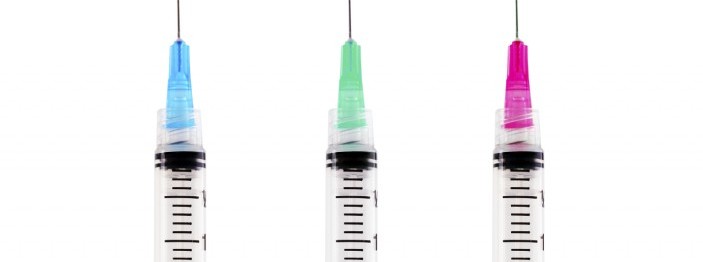FDA approves new dosing for Copaxone
The U.S. Food and Drug Administration has approved a new, less frequent dosing schedule for Copaxone (glatiramer acetate). The new schedule uses a higher dose (40 mg instead of the usual 20 mg), but injections are only three times per week (instead of daily).
FDA approval was based on the results of the GALA trial, which compared the new Copaxone schedule with a placebo in over one thousand people (Khan et al. Ann Neurol 2013;73:705-713). After one year, the mean annualized relapse rate was 0.331 with Copaxone compared to 0.505 with placebo. This one-third reduction in the relapse rate is fairly comparable to what’s been seen in clinical trials using the standard Copaxone dose (20 mg daily). Treatment also reduced new inflammatory lesions seen on an MRI.
Copaxone has been a popular MS therapy over the past decade but its requirement of daily injections – more frequent than what’s needed with the interferons – has always been a challenge. So less frequent injections will certainly be an advantage. The new formulation uses a higher-dose formulation, but actually delivers a lower overall dose than the usual daily injections (120 mg vs. 140 mg).
However, it isn’t entirely clear if a higher 40-mg dose is needed. In the FORTE study, a daily dose of 40 mg was no more effective than the standard daily dose of 20 mg (Comi et al. Ann Neurol 2011;69:75-82). The mean annualized relapse rate after one year with the two doses was very similar (0.35 compared to 0.33).
Earlier studies also looked at different dosing schedules to see if less frequent injections were a possibility. One found that Copaxone 20 mg taken every other day was as effective as daily injections (Flechter et al. Clin Neuropharmacol 2002;25:11-15). In addition, a two-year study comparing glatiramer acetate 20 mg taken twice a week had a similar effect as daily injections with respect to relapse rate, disability progression and number of MRI lesions (Caon et al. AAN 2010; abstract S11.002). As you might expect, less frequent injections meant that skin denting (called lipoatrophy), skin reactions at the injection site, and other side effects were less likely.
The FDA approval only allows the new higher-dose formulation of Copaxone to be marketed in the U.S., so it won’t be immediately available in other countries. In the meantime, more studies are needed to determine the lowest effective dose and injection frequency for Copaxone.
Share this article
Facebook Twitter pin it! Email
Related Posts
Back





